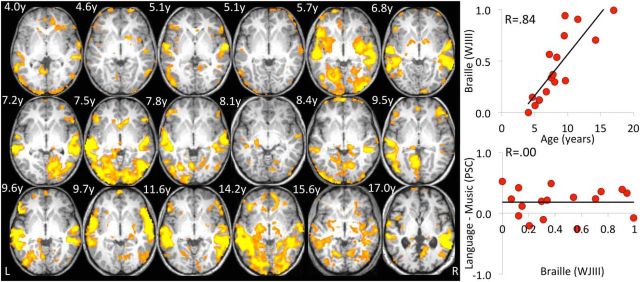Figure 3.
Occipital responses to spoken language are stable across age and Braille proficiency. Left, Language responses in individual blind children. Each child's Language > Music t-map is displayed on his or her own normalized anatomy at a threshold of t > 2.59 (p < 0.005). Children's data are shown from youngest (left) to oldest (right). Data from the child who continued to have some residual vision during toddlerhood is second from left in the middle row. This participant showed as much plasticity as the congenitally blind children. The z coordinates for each child are between −2 and 6, and the y coordinates between −54 and −64. Right, Effects of Braille reading and age. Across participants, Braille reading abilities differed substantially across children and were highly correlated with age (top). However, Braille-reading scores did not predict responses to spoken language in occipital cortex (Language > Music) (bottom).

